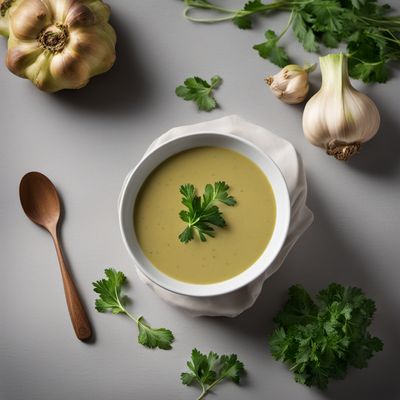
Recipe
Molecular Gastronomy Pizza Margherita
The Futuristic Twist on a Classic: Molecular Gastronomy Pizza Margherita
4.9 out of 5
In the realm of molecular gastronomy, even the most traditional dishes can be transformed into innovative culinary creations. This Molecular Gastronomy Pizza Margherita takes the beloved Italian classic to new heights, combining scientific techniques with the essence of the original cuisine.
Metadata
Preparation time
30 minutes
Cooking time
12 minutes
Total time
42 minutes
Yields
4 servings
Preparation difficulty
Medium
Suitable for
Vegetarian, Gluten-free (with appropriate dough substitution), Low-carb (with appropriate dough substitution), Keto (with appropriate dough substitution), Molecular gastronomy enthusiasts
Allergens
Dairy (mozzarella cheese), Gluten (unless using gluten-free dough)
Not suitable for
Vegan, Dairy-free, Nut-free, Paleo, High-protein diets (due to reduced cheese quantity)
Ingredients
While the traditional Pizza Margherita is known for its simplicity and rustic charm, this molecular gastronomy adaptation adds a touch of modernity. The ingredients are deconstructed and reimagined using innovative techniques, resulting in a visually stunning and flavor-packed dish. We alse have the original recipe for Pizza Margherita, so you can check it out.
-
200g (7 oz) pizza dough 200g (7 oz) pizza dough
-
100g (3.5 oz) mozzarella cheese, grated 100g (3.5 oz) mozzarella cheese, grated
-
50g (1.8 oz) cherry tomatoes, halved 50g (1.8 oz) cherry tomatoes, halved
-
10g (0.35 oz) basil leaves 10g (0.35 oz) basil leaves
-
10g (0.35 oz) olive oil 10g (0.35 oz) olive oil
-
5g (0.18 oz) balsamic vinegar 5g (0.18 oz) balsamic vinegar
-
2g (0.07 oz) agar-agar powder 2g (0.07 oz) agar-agar powder
-
1g (0.04 oz) calcium lactate gluconate 1g (0.04 oz) calcium lactate gluconate
-
1g (0.04 oz) sodium alginate 1g (0.04 oz) sodium alginate
-
500ml (2 cups) water (for spherification) 500ml (2 cups) water (for spherification)
-
Salt and pepper to taste Salt and pepper to taste
Nutrition
- Calories (kcal / KJ): 250 kcal / 1046 KJ
- Fat: 12g (Saturated Fat: 6g)
- Carbohydrates: 25g (Sugars: 2g)
- Protein: 10g
- Fiber: 2g
- Salt: 1g
Preparation
-
1.Preheat the oven to 220°C (430°F).
-
2.Roll out the pizza dough into a thin circle and place it on a baking sheet.
-
3.Bake the pizza dough in the preheated oven for 10-12 minutes or until golden brown.
-
4.In a small saucepan, combine the water and agar-agar powder. Bring to a boil and simmer for 2 minutes, stirring constantly.
-
5.Remove the saucepan from heat and let the mixture cool slightly.
-
6.In a separate bowl, mix the mozzarella cheese with calcium lactate gluconate until well combined.
-
7.Using a dropper, drop small spheres of the cheese mixture into the cooled agar-agar solution. Let them set for a few minutes.
-
8.In another bowl, mix the cherry tomatoes with sodium alginate. Let them sit for 5 minutes.
-
9.Using a slotted spoon, carefully transfer the tomato mixture into a bowl of water to rinse off the excess sodium alginate.
-
10.Arrange the cheese spheres and tomato pearls on top of the baked pizza dough.
-
11.Drizzle olive oil and balsamic vinegar over the pizza.
-
12.Garnish with fresh basil leaves and season with salt and pepper to taste.
Treat your ingredients with care...
- Mozzarella cheese — Grate the cheese while it's cold for easier handling.
- Agar-agar powder — Make sure to dissolve it completely in the water to avoid lumps.
- Sodium alginate — Gently stir the tomato mixture to prevent excessive foaming.
Tips & Tricks
- For a more intense tomato flavor, use sun-dried tomatoes instead of fresh cherry tomatoes.
- Experiment with different herbs and spices to customize the flavor profile of the cheese spheres.
- If you don't have access to molecular gastronomy ingredients, you can still enjoy a modern twist by using mini mozzarella balls and cherry tomato halves as toppings.
Serving advice
Serve the Molecular Gastronomy Pizza Margherita as a unique appetizer or as part of a molecular gastronomy tasting menu. Cut it into small, bite-sized pieces to allow guests to fully experience the innovative textures and flavors.
Presentation advice
Arrange the pizza slices on a sleek, modern serving platter. Garnish with microgreens or edible flowers to add a pop of color and elegance.
More recipes...
For Pizza Margherita » Browse all
For Italian cuisine » Browse all
For Molecular gastronomy » Browse all
More Italian cuisine dishes » Browse all

Minestra di lenticchie e pasta
Lentil and pasta soup
Minestra di lenticchie e pasta is a traditional Italian soup that is perfect for a cold winter day. It is a hearty and filling soup that is made...

Pardulas
Pardulas are a traditional Sardinian dessert that are perfect for any occasion. These delicious pastries are made with ricotta cheese and a sweet...

Acciughe sotto pesto
Anchovies under pesto
Acciughe sotto pesto is a traditional Italian dish that is made with anchovies and a flavorful pesto sauce. It is typically served as an appetizer...








